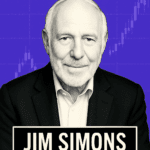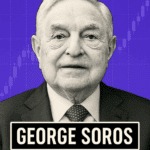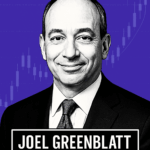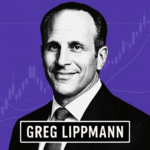WILLAM DELBERT GANN
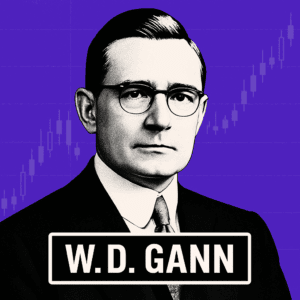
Think and Trade like W.D. Gann
William Delbert Gann is one of the most enigmatic and influential traders in history. Known for his pioneering work on market cycles, time analysis, and the “Law of Vibration,” Gann’s methods combined mathematics, geometry, astrology, and ancient wisdom to forecast market movements. While Gann’s work may appear mysterious, his trading philosophy is grounded in understanding time as the master key to unlocking the markets. Let’s dive into how you can think and trade like W.D. Gann, using his most famous quotes and teachings, enriched with real-world examples from his methods.
Core Trading Principles
Applying Gann’s Wisdom in Your Trading Strategy
To think and trade like W. D. Gann, you need to:
- Master Time Cycles: Study historical time periods to anticipate turning points.
- Combine Price and Time: Align price patterns with time-based analysis.
- Apply Mathematical Precision: Use geometric tools like Gann Angles and Squares.
- Understand Natural Laws: Incorporate the Law of Vibration and cause-and-effect principles.
- Study Human Nature: Recognize crowd psychology and take a contrarian stance when necessary.
W.D. Gann’s 1909 Market Predictions and Legacy
In December 1909, Ticker and Investment Digest published an interview by Richard D. Wyckoff highlighting W.D. Gann’s uncanny market forecasts. Gann had publicly demonstrated a series of precise predictions in stocks and commodities that year, often hitting exact price targets or timing major moves. Some notable examples include:
When New York Central was trading at 131, Gann forecast it would rise to 145 before declining to 129 – which proved correct.
In 1908, with Union Pacific at 168⅛, he predicted it would not touch 169 before a substantial drop; indeed, it fell to 152⅝, allowing profits on short sales. He similarly told a colleague that U.S. Steel (around $50) would climb to $58 but not reach $59, then plunge about 16 points – the stock topped out at 58 and subsequently collapsed to $41.
Gann projected a big rise in wheat prices. For example, when wheat was ~$0.89, he predicted the May Wheat futures would reach $1.35; the market eventually hit exactly $1.35. In another instance, he boldly stated that September 1909 Wheat would trade at $1.20 by month’s end. On September 30, the final trading hour of the month, wheat suddenly rallied and peaked at $1.20 (and no higher), fulfilling his forecast to the cent.
This dramatic call – essentially a year-ahead target price – astonished observers and was later cited in the financial press as evidence of his predictive skill.
Gann didn’t just predict prices but also timing. He calculated in advance the exact day a market rally would top in August 1909 and the level of the Dow Jones average on that day. Impressively, the market peaked on the forecasted day and within 0.4% of Gann’s predicted Dow level. Such timing accuracy was virtually unheard of at the time.
Perhaps most striking was Gann’s October 1909 trading test observed by a Ticker magazine representative. Over 25 trading days, Gann executed 286 trades (both long and short) in various stocks, winning on 264 trades and losing on only 22 – a success rate above 92%. His starting capital was doubled ten times over that month (a 1000% gain).
Witnesses noted Gann would often pinpoint intraday turning points; on one occasion he gave 16 consecutive trade orders in a single stock, and 8 of those trades caught the exact top or bottom eighth of the price swing.
In two cases, he called turning points to the eighth of a point: e.g. selling U.S. Steel at 94⅞ with the assertion “it will not go to 95” – and indeed it peaked at 94⅞ before dropping.
Such feats were documented and verified by the magazine, which stated these results were “unparalleled in the history of the Street”.
Overall, the 1909 article emphasized that “Mr. Gann’s predictions have proved correct in a large majority of instances.”
While no trader is infallible, Gann’s early track record – as reported in 1909 – was extraordinarily accurate, lending credibility to his claim of a scientific forecasting method.
Time Cycles, Mathematics, and the “Law of Vibration”
W.D. Gann attributed his forecasting ability to an innovative analytical method grounded in geometry, mathematics, cycles, and what he termed the “law of vibration.” In the 1909 interview, Gann explained that after years of studying historical market data (even researching price records back to 1820), he concluded that natural laws govern market movements.
Key aspects of his stated methodology include:
Gann observed recurring price patterns and cycles in market history. He noted “periodical recurrence” of rises and falls in stocks and commodities, suggesting a cyclic law underlying these movements.
He gave credit to contemporary cycle research (e.g. the “Cycles of Prosperity and Depression” identified by Henry Hall) and claimed his own discovery could forecast not just long-term cycles but even “daily and hourly movements”. Gann believed major market swings are cyclical and repeat over time, often citing historic panics or highs that occurred in rhythmic intervals. (For example, he later pointed out the 1929 crash came 60 years after the 1869 panic and 30 years after 1899, reflecting a cycle.)
This focus on time cycles — from short-term oscillations to multi-decade intervals — was central to his forecasting approach.
According to Gann, each market instrument (stock or commodity) has its own unique vibration or energy signature that determines its price behavior.
He asserted that “through the law of vibration, every stock in the market moves in its own distinctive sphere of activities… Stocks, like atoms, are really centers of energy; therefore, they are controlled mathematically”.
In practical terms, he claimed to calculate the vibratory rate of a stock by analyzing numerical relationships (including past high/low price levels and time intervals), which enabled him to predict where and when that stock would meet resistance or support.
Gann analogized this to concepts in physics – noting that just as wireless telegraphy or phonographs rely on vibration, market prices too oscillate in waves governed by natural law.
He did not fully divulge the formula behind his Law of Vibration, calling it an “entirely new idea” and hinting that it involved advanced mathematics and principles of harmony.
However, he stressed that nothing in the markets happens by chance: “mathematical principles of the highest order lie at the foundation of all things… Vibration is fundamental: nothing is exempt from this law”.
In essence, Gann viewed price movements as a manifestation of a cosmic or natural order that could be decoded with the right mathematical approach.
Gann was a self-professed “gifted mathematician” and his techniques heavily employed numerical relationships. For example, he often used geometric angles on charts (later known as Gann Angles or the “Gann fan”) to relate time and price. His philosophy was that markets are geometric in design, so equal intervals of time and price should be plotted uniformly.
A core idea was the 1×1 angle (45°) – signifying a balance of one unit of price per one unit of time – which he deemed an idealized equilibrium; a break of that angle could indicate a trend change.
He also made use of specialized numeric charts (e.g. the Square of 9 and other grids) to find repeating price-time cycles. Many of these tools (not elaborated in the 1909 interview, but revealed later) were ways to apply mathematical ratios, square roots, and geometric cycles to market forecasting.
Gann’s blending of mathematics with cycle analysis even extended to astronomy/astrology – he believed planetary cycles sometimes influenced market rhythms (For instance, he watched the 30-year cycle of Saturn or the 23-year cycle of sunspots in relation to market panics.) While skeptics found the astrological aspect unorthodox, Gann saw it as part of natural law.
Overall, he maintained that by applying mathematical and geometric principles to historical price data, one could calculate in advance critical price levels and turning-point dates.
His famous assertion was that “every effect must have an adequate cause” in the market – by identifying the timing cycles and price vibrations (the causes), one could forecast the resulting price moves (the effects).
In summary, Gann’s method combined deep historical research with a belief in repetitive natural cycles and mathematical harmony. He distilled this into a proprietary system (the Law of Vibration) that purportedly allowed him to predict market highs, lows, and turning dates with eerie precision. He presented speculation as a science, insisting that “to speculate scientifically it is absolutely necessary to follow natural law” rather than market hunches or tips. This scientific aura around his method was a hallmark of Gann’s persona – he often pointed to the exhaustive years of study and the mathematical logic behind his forecasts to explain their uncanny accuracy.
Additional Examples of Gann’s Forecasting Prowess
Beyond the 1909 demonstrations, Gann’s later career provides further instances where he appeared to anticipate major market events or historical turns with remarkable foresight. Several documented examples include:
Gann ventured beyond finance when he reportedly predicted the end of World War I. In the spring of 1918, he forecast the abdication of Germany’s Kaiser and an end to the war by November 1918.
This prediction was disseminated to newspapers nationwide, and indeed Kaiser Wilhelm II abdicated on November 9, 1918, with the Armistice ending WWI coming on November 11, 1918.
Contemporary accounts indicate Gann’s war forecast was recognized after the fact, suggesting he successfully applied his cycle analysis to global events as well as markets. (It’s worth noting Gann believed major wars and market panics were also cyclical; he often linked conflict cycles to economic cycles in his writings.)
In 1927 Gann published a curious science-fiction novel The Tunnel Thru the Air. While fictional, the book is laced with astrological dates and coded market philosophy. Many Gann followers believe this work forecast the onset of World War II, particularly the Japanese attack on Pearl Harbor in 1941.
In the novel, Gann describes a surprise aerial attack on the United States and a great war in the late 1930s, which in hindsight has parallels to the actual events of 1941–1945. This is a more speculative example, since the prediction was cloaked in fiction. However, Gann himself hinted that hidden within Tunnel Thru the Air were the “secret clues” to his forecasting method and future events – leading readers to comb it for encoded prophecies.
Decades later, analysts noted the book’s eerie anticipation of air warfare and a conflict with Japan, believing Gann did successfully project the timing of WWII using his cycle theories.
Perhaps Gann’s most famous financial call was for the great Crash of 1929. In late 1928, he issued an annual forecast (through his subscription “Supply and Demand” newsletter) that outlined a major top in 1929. According to reports, Gann predicted the market would continue to rally to early April 1929, then suffer a sharp spring setback, resume rising to record highs by late summer (early September 1929), and afterward “the biggest stock market crash in history” would follow.
This forecast proved remarkably prescient. The Dow Jones Industrials hit a then-record high in early September 1929 and soon after began the collapse that led to the October 1929 crash. Gann’s foresight was not a vague warning but a detailed roadmap: he pinpointed the April 1929 pullback (the market did break sharply in April-May 1929) and the final top around September 1929.
Such accuracy earned Gann considerable fame. Decades later, financial writers noted that Gann “predicted the stock market would hit new highs until early April [1929]… then new highs until early September. Then it would top and afterward come the biggest crash in history”.
His correct anticipation of 1929’s pivotal turns solidified his reputation as an elite forecaster.
Alignment with His Trading Principles and Philosophy
W.D. Gann’s successful predictions were not lucky guesses; they were the product of a coherent trading philosophy that he preached throughout his life. His forecasting feats aligned closely with the principles he espoused in his writings and trading courses:
Gann believed that speculation should be treated as a serious profession. In the 1909 interview, he noted that most losing traders jump in without sufficient knowledge, whereas successful professionals (lawyers, doctors, etc.) first devote years to study.
Accordingly, he spent a decade researching market history and refining his methods before claiming consistent profits.
This principle of rigorous preparation manifested in his forecasts – for instance, his ability to call the 1929 top was rooted in studying past boom-bust cycles (he scoured decades of data by hand).
Gann’s approach was essentially academic in the sense that he combed through archives and records to derive theories, much like a scientist testing a hypothesis. His success stories reinforced his mantra that deep research and respect for market history are crucial for trading.
A cornerstone of Gann’s philosophy was that markets are not random; they move according to natural laws and repeating causes. He often said “there is no chance in nature” – every effect (price movement) has a cause.
This conviction drove him to find the causes (cycles, mathematical relationships) behind market effects. All his predictions – hitting exact prices or dates – reflect this deterministic outlook.
Rather than reacting to news or rumors, Gann’s trades were based on his calculated “cause” (e.g. a cycle turning date), expecting the predicted “effect” (market reversal) to follow.
His ability to stand by a forecast (such as insisting wheat must reach $1.20 by a deadline) shows the confidence he had in his principles of causation and vibration.

